 Devilman Crybaby continues to be a series that has me feeling conflicted. There’s a certain sense that you get when you’re watching anime from a great director, an auteur – someone like Watanabe Shinichirou, or Kon Satoshi, or Hara Keiichi. Even if it’s not their best work you can sense the hand of genius moving behind it. And when it is their best work, the experience is transformative, almost religious. If you love the medium there’s no feeling quite like it.
Devilman Crybaby continues to be a series that has me feeling conflicted. There’s a certain sense that you get when you’re watching anime from a great director, an auteur – someone like Watanabe Shinichirou, or Kon Satoshi, or Hara Keiichi. Even if it’s not their best work you can sense the hand of genius moving behind it. And when it is their best work, the experience is transformative, almost religious. If you love the medium there’s no feeling quite like it.
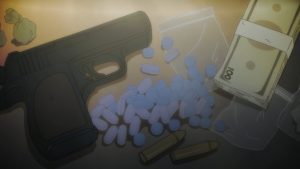 Yuasa Masaaki certainly qualifies as an auteur in my book, and probably a great director too. Maybe not on the level of greatness of the trio above or a couple of others I could mention, but great. And Devilman Crybaby has the hallmarks of Yuasa-sensei’s unique sensibility all over it. But for me it falls more into the “not their best work” category, at least so far. Yuasa seems to have embraced the possibilities a Nagai Go manga and Netflix budget offered, but perhaps a bit too enthusiastically. With this material, this much money and effectively no censorship, he’s like a kid enjoying his toys a bit too much.
Yuasa Masaaki certainly qualifies as an auteur in my book, and probably a great director too. Maybe not on the level of greatness of the trio above or a couple of others I could mention, but great. And Devilman Crybaby has the hallmarks of Yuasa-sensei’s unique sensibility all over it. But for me it falls more into the “not their best work” category, at least so far. Yuasa seems to have embraced the possibilities a Nagai Go manga and Netflix budget offered, but perhaps a bit too enthusiastically. With this material, this much money and effectively no censorship, he’s like a kid enjoying his toys a bit too much.
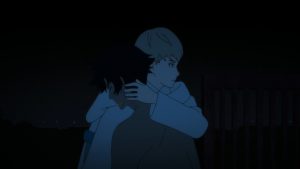 I wonder if this series might be connecting with me more if we’d gotten to know Akira a little better before he transformed. Basically the human he used to be disappeared halfway through the first episode, so while the gulf between the kind and timid boy he was and the powerful half-demon he’s become is supposed to be striking, I don’t have much sense of it because I never really got to know that boy. Akira is who he is now – Devilman. That he was ever anything else is almost a blip, really, and I don’t think “Crybaby” is the better for that.
I wonder if this series might be connecting with me more if we’d gotten to know Akira a little better before he transformed. Basically the human he used to be disappeared halfway through the first episode, so while the gulf between the kind and timid boy he was and the powerful half-demon he’s become is supposed to be striking, I don’t have much sense of it because I never really got to know that boy. Akira is who he is now – Devilman. That he was ever anything else is almost a blip, really, and I don’t think “Crybaby” is the better for that.
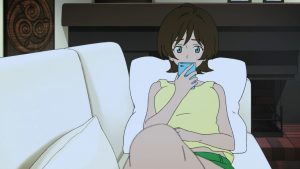 One thing that’s become clear is that whatever Akira has become, in most ways he’s still more human than Ryou. I don’t know if it’s literally true or not – I haven’t ruled it out – but you’d have to be pretty inhuman to do what Ryou did to Akira in the first place. And if there’s a conscience between them it’s Akira who has it – it’s Ryou who thinks nothing of killing an old lady (Nagasaki’s mother) and then Nagasaki himself in cold blood, and Akira who’s horrified by it. Hell, he’s perfectly willing to kill Miki because she may (or may not) know Akira’s secret – and that’s a line Akira isn’t willing to cross.
One thing that’s become clear is that whatever Akira has become, in most ways he’s still more human than Ryou. I don’t know if it’s literally true or not – I haven’t ruled it out – but you’d have to be pretty inhuman to do what Ryou did to Akira in the first place. And if there’s a conscience between them it’s Akira who has it – it’s Ryou who thinks nothing of killing an old lady (Nagasaki’s mother) and then Nagasaki himself in cold blood, and Akira who’s horrified by it. Hell, he’s perfectly willing to kill Miki because she may (or may not) know Akira’s secret – and that’s a line Akira isn’t willing to cross.
 The shock factor is definitely effective here, but no matter how much of it there is sex and violence is just sex and violence. it doesn’t mean much in a story context unless it’s integral to something larger. And Yuasa’s sense of style is unerringly impactful. Plus, the rapping is great. But when you put all that together I’m still not sure exactly what you get – not great anime, certainly (at least not yet) but certainly something distinctive, and maybe important.
The shock factor is definitely effective here, but no matter how much of it there is sex and violence is just sex and violence. it doesn’t mean much in a story context unless it’s integral to something larger. And Yuasa’s sense of style is unerringly impactful. Plus, the rapping is great. But when you put all that together I’m still not sure exactly what you get – not great anime, certainly (at least not yet) but certainly something distinctive, and maybe important.


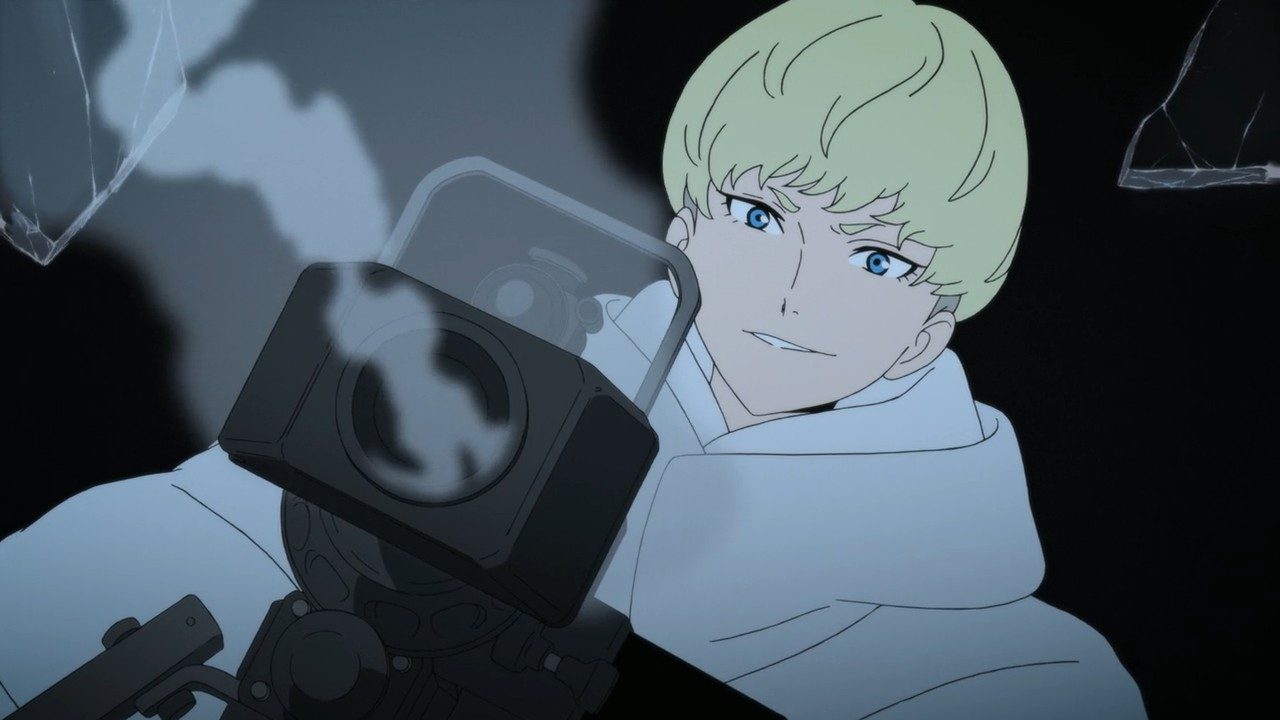

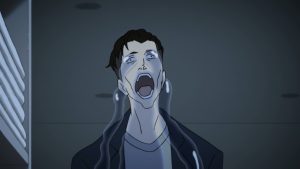





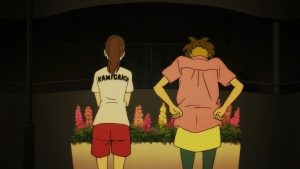
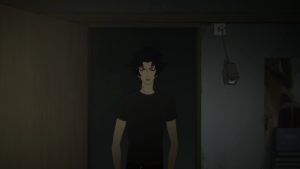

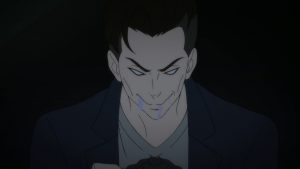
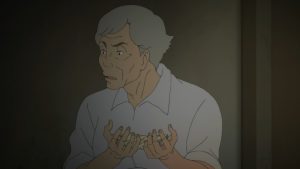



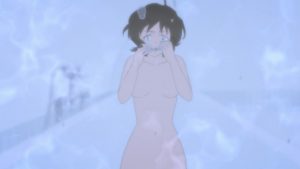


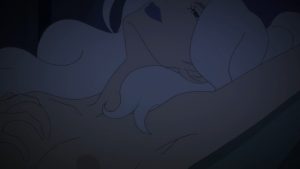
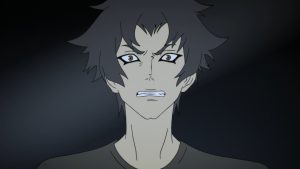
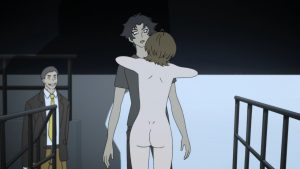

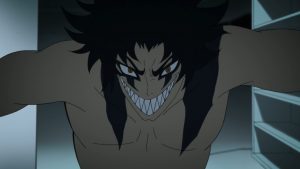
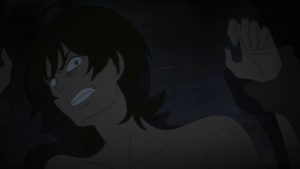
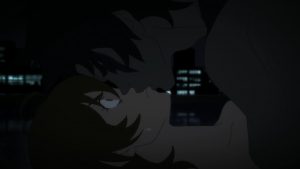
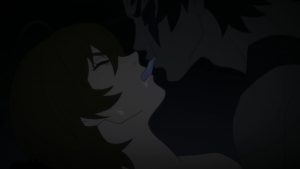

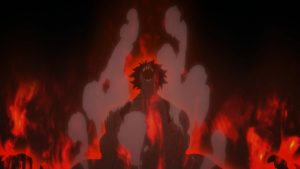
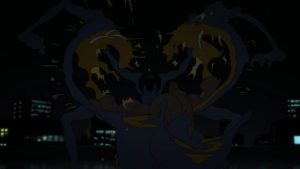
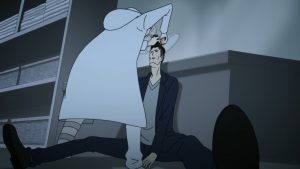
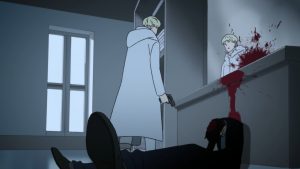


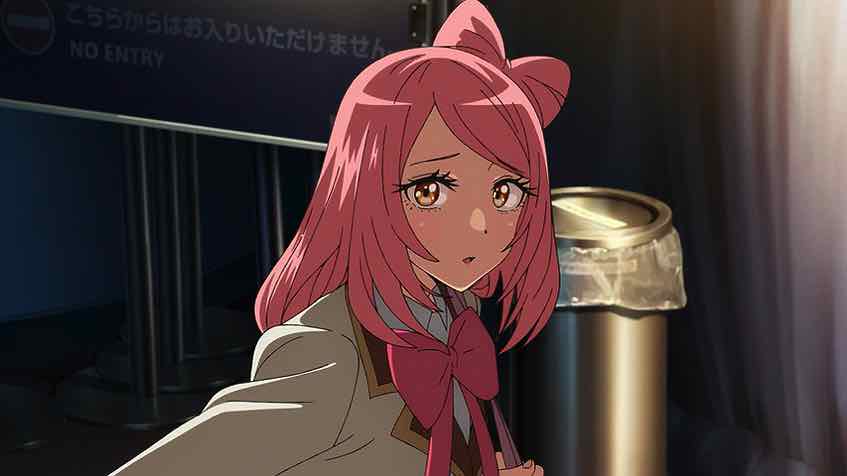
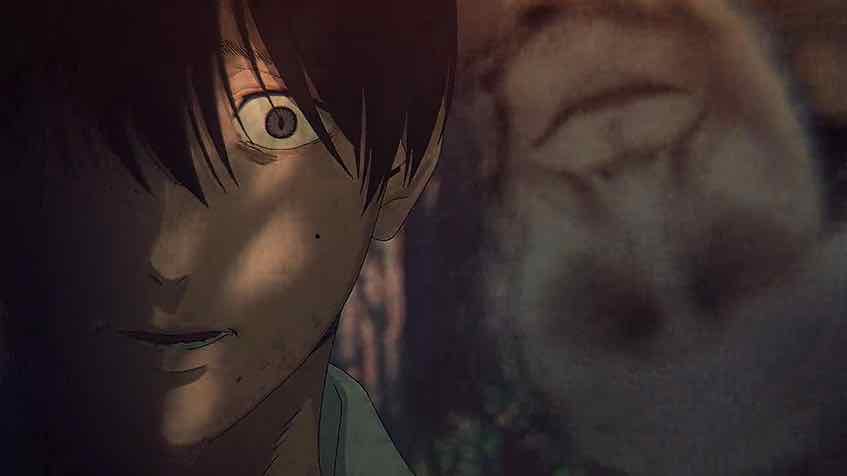
Simone
January 31, 2018 at 1:37 amI’ve just read volume 1 of Go Nagai’s original manga and I have to say I have a newfound appreciation for what Yuasa did here, balancing loyalty to the material and the needs of good visual storytelling. The original is dated in a number of ways – not so much the edginess (I barely saw a few nipples in it) as much as the pacing. Half the first volume is Ryou and Akira talking, in an endless stream of exposition about the demons and their nature. Some of it is in episode 1 of the anime (part of it being transformed into flashback form), some of it will be revealed later, and some of it has just been cut out entirely as unnecessary. The characters are also far more vivid for me, at the moment, in the show than the manga. Manga!Akira has barely more time than that before turning into Devilman, and he’s overall not much more of a character. The “crybaby” trait, the running as a metaphor for striving for human limits even when “humans aren’t made for running”, etc. are all anime additions. In many ways this adaptation feels more character-driven vs. a manga that gave me the impression to be mostly preoccupied with the grand narrative of humans vs. demons. Which makes sense, since apparently Go Nagai was inspired by Gustav Dore’s illustrated Divine Comedy for his work – his demon grotesques feel definitely like they come out of some medieval nightmarish painting, and Ryo himself cites Dante. So I imagine his vision was more one of visual grandeur and horror than of personal stories.
カリ冶
February 12, 2018 at 3:53 pmSex and violence are only to be expected in a story about DEVILS. It’s thematically fitting and helps to establish the mood. Those elements are not even explicit, not when compared to what you can see in live action cinema.